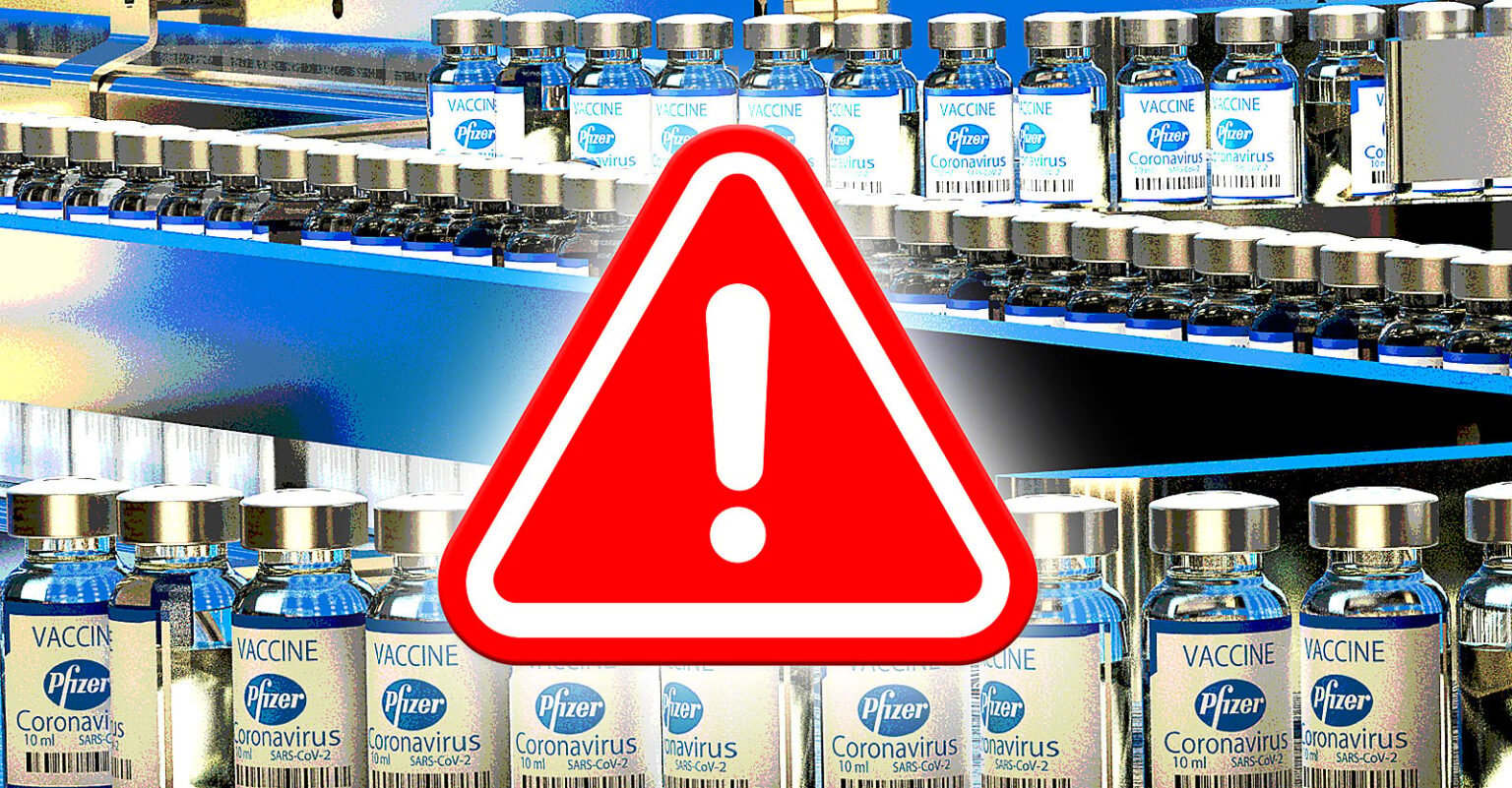CHD Scientists Uncover Evidence of Pfizer ‘Hot Lots’ Linked to Higher Rates of COVID Vaccine Injuries
Guest Post by
Different batches of the Pfizer-BioNTech COVID-19 vaccine distributed in the U.S. had very different rates of serious adverse events, according to a peer-reviewed research letter by the Children’s Health Defense science team. The letter was published late yesterday in Science, Public Health Policy and the Law.

Different batches of the Pfizer-BioNTech COVID-19 vaccine distributed in the U.S. had very different rates of serious adverse events (SAEs), according to a peer-reviewed research letter published late Thursday in Science, Public Health Policy and the Law.
Children’s Health Defense (CHD) scientists Brian Hooker, Ph.D, chief scientific officer, and Karl Jablonowski, Ph.D., senior research scientist, co-authored the letter.
Hooker and Jablonowski found the highest SAE rates occurred in COVID-19 vaccine batches distributed during the first two months of the vaccination program — and the highest proportions of those batches were sent to government agencies, hospitals, universities and health departments, as opposed to clinics, pharmacies and doctor’s offices.
The “extremely high” amount of variability from lot to lot suggests “very poor manufacturing controls,” and a “manufacturing process that should have never been approved in the first place,” Hooker told The Defender.
Under emergency use authorization, vaccine makers aren’t required to have their final filled and finished vials inspected, according to Dr. Peter McCullough. Contaminants from the manufacturing process can be concentrated in certain lots. Product transport, storage and use issues also may affect particular lots.
The paper is the latest in a series of papers to analyze vaccine lot and adverse event data by country. Researchers in Denmark, the Czech Republic and Sweden conducted similar studies with similar results.
For this study of U.S. data, CHD researchers analyzed vaccine lot data for the Pfizer-BioNTech vaccine. This type of analysis allows researchers to track where the vaccine was manufactured and where it was distributed.
Informed Consent Action Network obtained the data in October 2022 through a Freedom of Information Act request.
CHD scientists matched that data to reports of adverse events in the Vaccine Adverse Event Reporting System (VAERS), a passive reporting system where providers or recipients can report injuries. It is not a complete inventory of all adverse events and is known to capture less than 1% of them.
The lot data showed that 410 million doses of the Pfizer-BioNTech vaccine produced in 156 different lots were distributed to 46,327 vaccine administration sites across the U.S. between Dec. 13, 2020, and April 26, 2022.
According to the data, on average 1,011,055 vaccines were distributed per day. The vaccines came from between one and 10 different lots, and the number of doses produced in each lot varied widely — from 10,530 to over 11.8 million.
For the three years of data analyzed, 977,542 adverse events were reported to VAERS. Of those, 455,820, or 46.7%, were related to the Pfizer-BioNTech vaccines.
Only 29% of the reports included a lot number. Among those, 290,835 of the serious adverse events could be linked to the lot numbers in the Pfizer data.
The reports included a wide range of side effects:
- 78% of the adverse events reported weren’t serious.
- 20% were considered serious, meaning they required hospitalization or an emergency room visit or included a life-threatening event, permanent disability or congenital malformation.
- 2% of the entries reported a death.
The researchers found that the adverse events were not distributed proportionally across the different lots — some batches were associated with more side effects, and in some cases, significantly more.
The earlier batches sent to mass distribution centers like hospitals had more side effects than the later ones sent to pharmacies and large grocery chains. Some lots, particularly early ones, had higher rates of deaths and serious adverse events.
The rate of serious adverse events declined through time in all categories, which the researchers noted could be attributed to system management, fewer people reporting injuries, or fewer injuries.
The scientists said they expected to find a high number of deaths in states with the highest populations, such as California, Texas or New York. Instead, the proportions of serious injuries and deaths were relatively higher in places such as South Dakota, Kentucky and Tennessee.
The authors noted that data were made available only through legal action, which makes it challenging to do this type of research. Also, the VAERS database is insufficient to capture all adverse events and regional variations within states, posing another challenge to understanding the full range of possible issues with the lots.
U.S. data confirm Danish study that was subjected to ‘obsessive criticism’
CHD scientists built their analysis on work published by Danish researchers in 2023, who analyzed Pfizer lot data associated with reported serious adverse events in Denmark.
That Danish study analyzed data from Dec. 27, 2020, to Jan. 11, 2022. The analysis found larger vaccine lot sizes were associated with fewer serious adverse events and 71% of the suspected adverse reactions occurred in 4.2% of the vaccine batches.
The study raised the alarm about safety issues associated with the vaccine production process.
The author of the Danish paper, Vibeke Manniche, M.D., Ph.D., told YouTube commentator John Campbell, Ph.D., in an interview that the study raised essential questions about Pfizer’s COVID-19 vaccine, “Has the product changed? When did it change? Why did it change?”
That paper garnered significant attention in the press and on social media, what the authors called “obsessive criticism” in the form of multiple responses from researchers attempting to discredit the study’s methodologies and interpretations.
The authors responded publicly in the European Journal of Clinical Investigation. They defended their interpretations and said they “eagerly await more definitive studies of batch-dependent safety of the BNT162b2 mRNA COVID-19 vaccine, for example, from the SSI [Danish Statens Serum Institut], to refute or validate our results and increase the evidence base for this important area of research.”
In June, Czech researchers from the University of Ostrava and other research institutions reproduced the Danish study’s methodology. They used Czech Republic data, released through a Freedom of Information Act request, from the beginning of the vaccination campaign through March 1, 2023.
They also analyzed adverse events reported after the COVID-19 vaccine by batch number and compared them to the results from the Danish registry data, but they had data from Pfizer, Moderna and AstraZeneca.
They similarly found that different batches had different rates of adverse events and that there were significantly higher numbers of adverse events associated with the early vaccine releases for all of the vaccines — “confirming the results of the study by Schmeling et al.”
Last month, the authors of the original Danish study expanded their analysis to Sweden and published their findings in the journal Medicina.
In that paper, the authors reported that the batch-dependent issues they identified in Denmark were confirmed in Sweden and suggest that early commercial doses of Pfizer’s vaccine may have differed from later ones. They concluded the issue merits further study.
The letter published today in Science, Public Health Policy and the Law similarly reproduced the Danish study’s methodology and made largely similar findings that there were clear variations in Pfizer’s lots and the patterns were similar.






